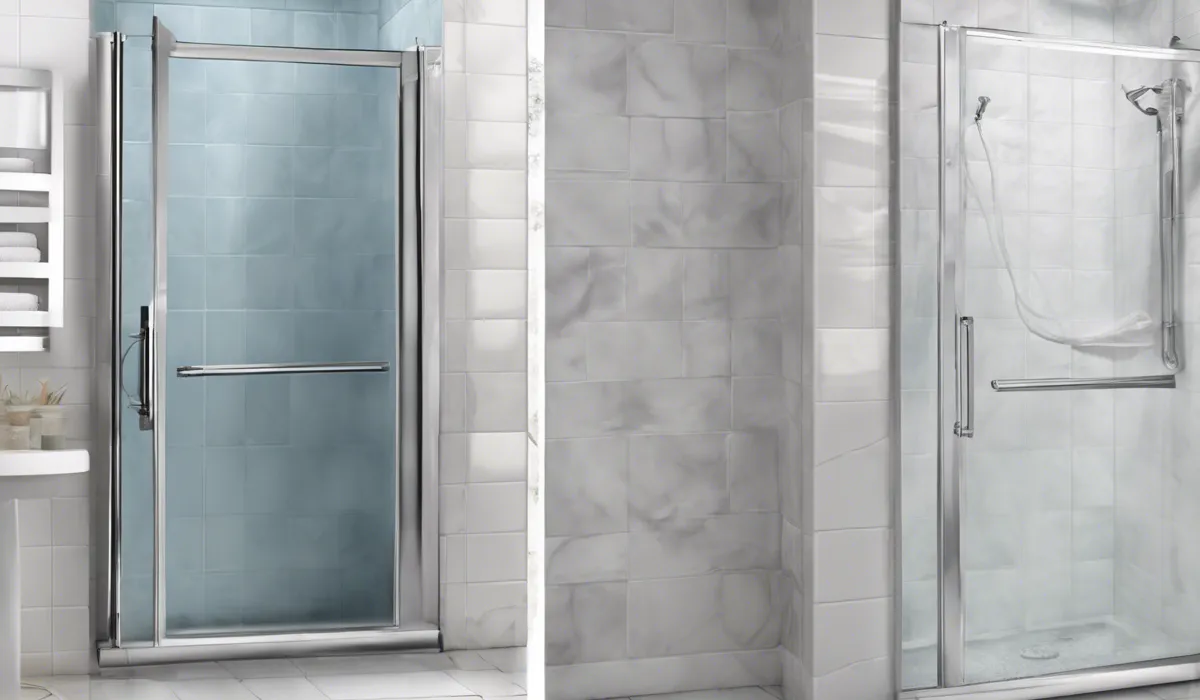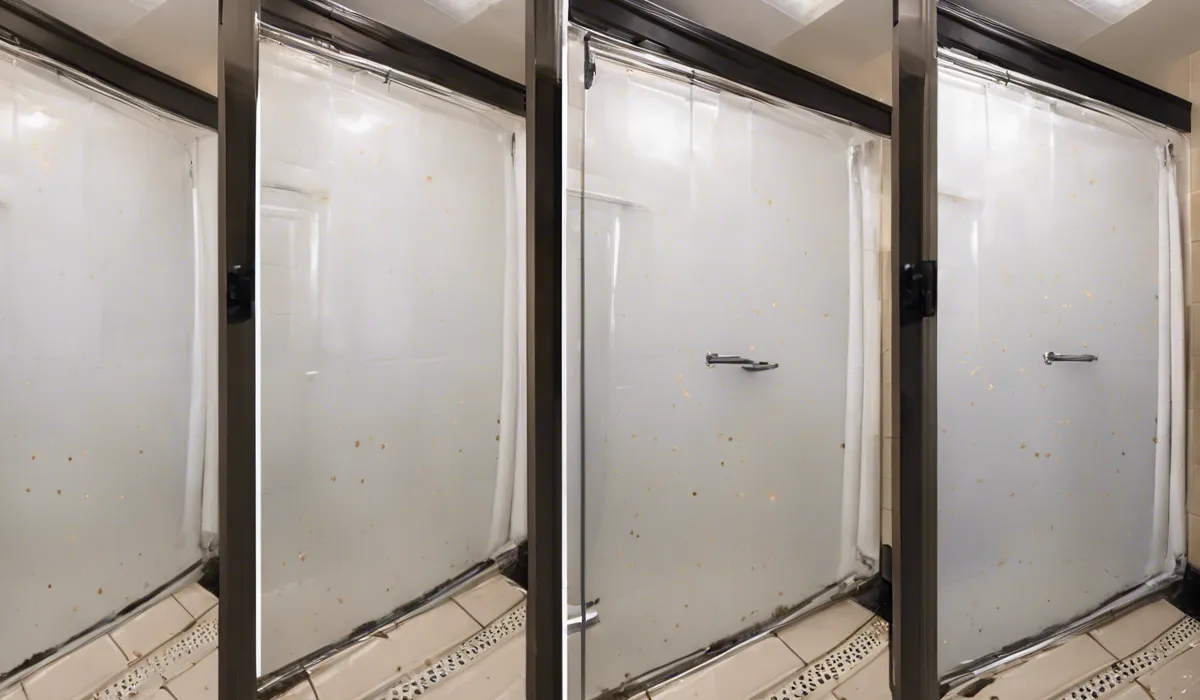To remove mold from a shower door seal, create a mixture of equal parts white vinegar and water. Apply it to the seal, let it sit for 5-10 minutes, then scrub with a toothbrush. Rinse with warm water and dry thoroughly to prevent regrowth.
Identification and Preparation

Recognize Mold on the Shower Door Seal
Mold can appear on shower door seals as black, brown, or greenish spots or streaks. It often thrives in the moist, warm environment of a bathroom, especially on the rubber or silicone seals around shower doors where water tends to collect.
Common areas where mold can grow on a shower door seal include the lower edges and the corners where water may pool after a shower.
These regions provide ideal conditions for mold to flourish, often out of direct sight and reach during regular cleaning.
Safety Considerations Before Beginning the Removal Process
Before tackling mold, protect yourself with gloves, a mask, and goggles to prevent contact with mold spores.
Ensure the bathroom is well-ventilated, either by using an exhaust fan or opening a window, to disperse any fumes from cleaning agents.
Gathering Necessary Cleaning Supplies and Tools
You will need effective mold-killing solutions such as vinegar, bleach, or hydrogen peroxide.
Have on hand a brush or toothbrush for scrubbing, as well as sponges for wiping surfaces. Use a bucket or container for mixing your chosen cleaning solution.
Mold Removal Process

Initial Cleaning of the Shower Door Seal
Start by wiping down the seal with a damp sponge to remove loose mold and debris. Apply your chosen mold-killing solution, such as a mixture of white vinegar and water, and let it sit for around 5-10 minutes to break down the mold.
Scrubbing and Deep Cleaning
Scrub the shower door seal gently but firmly with a toothbrush to remove the mold without damaging the seal.
Pay special attention to tight spaces where mold might hide. Rinse the area well with warm water and check if you need to repeat the application.
Drying and Preventing Future Mold Growth
After cleaning, it’s crucial to dry the seal thoroughly to prevent mold from returning. Use a clean, dry towel or cloth to remove any remaining moisture. Consider using a squeegee after each shower to keep the seal dry.
Maintenance and Prevention

Regular Cleaning Schedule
To prevent mold, clean your shower door seal at least once a month with gentle cleaning solutions. This routine maintenance will keep the seal in good condition and discourage mold growth.
Improving Ventilation and Reducing Moisture
Boosting ventilation can significantly reduce humidity in the bathroom. Use a bathroom fan or dehumidifier, and keep windows open when possible.
Additionally, wiping down the shower area after each use can limit the moisture that feeds mold.
Sealant Replacement and Professional Help
If the shower door seal is damaged or continues to harbor mold despite regular cleaning, it may be time to replace it.
For persistent mold problems, or if the area affected is large, seek professional mold remediation services to ensure your bathroom is safe and healthy.
FAQs About Removing Mold from Shower Door Seal
What is the best solution for cleaning mold off a shower door seal?
A mixture of equal parts white vinegar and water is an effective solution for cleaning mold off a shower door seal.
How long should the vinegar solution sit on the shower seal before scrubbing?
The vinegar solution should sit on the shower seal for 5-10 minutes before scrubbing.
What type of brush should be used to scrub mold off the shower door seal?
A toothbrush is ideal for scrubbing mold off the shower door seal because of its size and bristle stiffness.
Do I need to rinse the shower seal after scrubbing off the mold?
Yes, you should rinse the shower seal with warm water after scrubbing to remove any remaining mold and vinegar solution.
How can I prevent mold from regrowing on the shower door seal?
To prevent mold regrowth, dry the shower door seal thoroughly after cleaning and ensure good ventilation in the bathroom.
Final Thoughts
To tackle mold on shower door seals effectively, mix white vinegar and water in equal parts.
Apply this solution to the affected area, wait for about 5-10 minutes, and then gently scrub with a toothbrush.
After scrubbing, rinse the seal with warm water and make sure to dry it completely to hinder any future mold growth.
